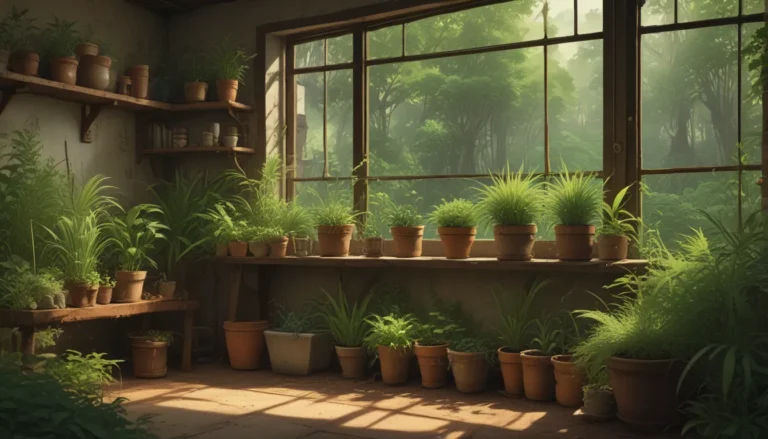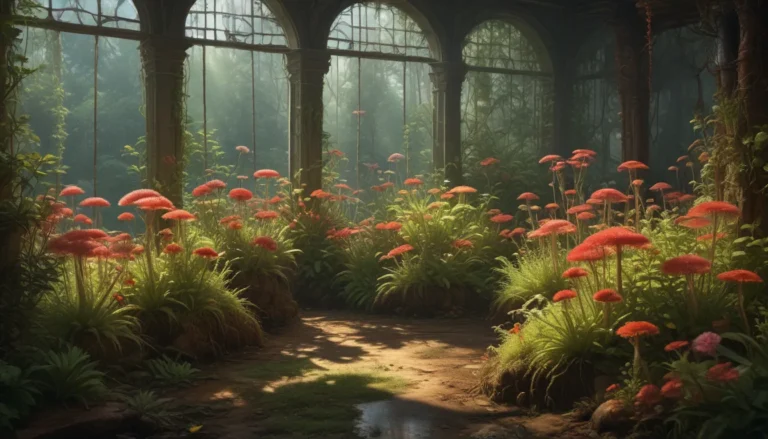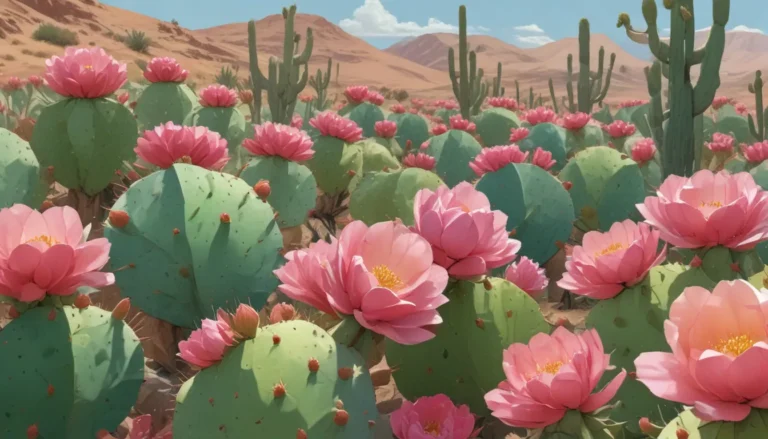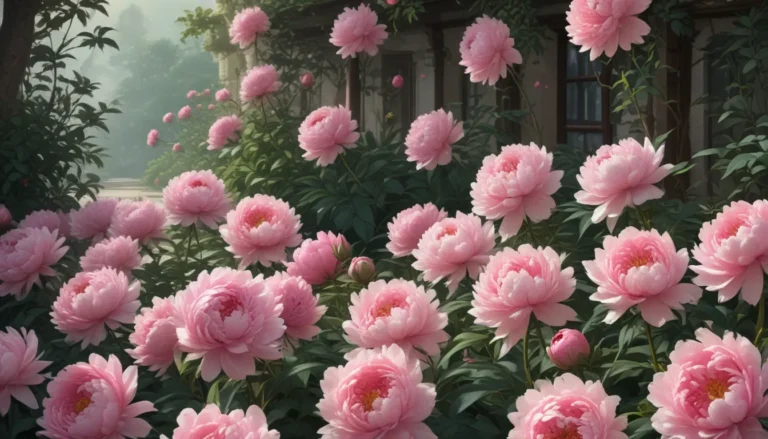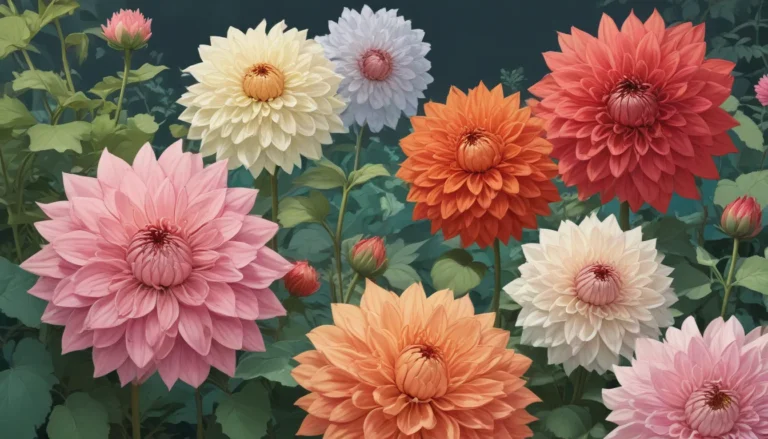Everything You Need to Know About Bleeding Hearts: Troubleshooting Yellowing Leaves

Are you a lover of bleeding hearts but find yourself dismayed when their leaves begin to turn yellow? If so, you’re not alone. The sight of yellowing leaves on your beloved plants can be concerning and leave you wondering what is causing this issue. From environmental factors to diseases, pests, and even the variety of bleeding hearts you planted, there are many reasons why this may be happening.
In this comprehensive guide, we will delve into the top nine reasons why your bleeding hearts may be turning yellow. So, put your detective hat on and join me as we explore the mysteries behind these beautiful heart-shaped flowers.
Understanding Bleeding Hearts
Before we dive into the reasons behind yellowing leaves, it’s essential to understand a bit about these unique flowers. Bleeding hearts, scientifically known as Lamprocapnos spectabilis, belong to the poppy family, Papaveraceae. These plants get their name from the heart-shaped flowers that resemble delicate Valentine’s Day creations.
One fascinating aspect of bleeding hearts is their pendant flowers, which hang delicately from a stem like charms. These flowers, also known as “lady’s locket,” are spring ephemerals, meaning they burst into life in early spring, then wither away in midsummer. However, not all bleeding heart varieties follow this pattern.
Many bleeding hearts found in nurseries are Asian bleeding hearts native to northern China, Korea, and Japan. While there are different species of bleeding hearts, including Dicentra varieties, the focus here will largely be on the L. spectabilis variety commonly grown in gardens.
The cultivation of bleeding hearts requires the right conditions in terms of temperature, light, and soil pH. Understanding these requirements is crucial in maintaining their health and preventing issues such as yellowing leaves.
The Top 9 Reasons for Yellowing Leaves
Now, let’s unravel the nine main reasons why your bleeding hearts may be experiencing yellowing leaves and how to address each issue effectively.
1. Too Much Heat
If your bleeding hearts are planted in a location exposed to excessive heat and sunlight, the leaves may begin to turn yellow. Bleeding hearts thrive in partial to full shade, depending on your growing zone. Zone 7-9 requires full shade, while Zone 3-6 can tolerate partial shade. Ensure your plants are in an appropriate location based on your region’s temperature to prevent premature yellowing.
2. Too Little Water
Insufficient water can lead to nutrient deficiencies in bleeding hearts, resulting in wilting and yellowing leaves. It’s crucial to keep the soil consistently moist, especially during hot, dry weather. Check the soil moisture regularly and provide deep watering to revive your plants.
3. Too Much Water
Conversely, overwatering can also cause yellowing leaves in bleeding hearts. Avoid waterlogged conditions that hinder root oxygenation and promote fungal diseases. Monitor the soil moisture levels and adjust your watering frequency accordingly to maintain a balance.
4. High Soil pH
A high soil pH can impact nutrient availability for bleeding hearts, leading to chlorosis or yellowing of leaves. Conduct soil tests to determine the pH level and correct any imbalances with suitable amendments. Maintain the pH within the optimal range of 6.0 to 7.0 to support healthy plant growth.
5. Fusarium Wilt
Fusarium wilt, caused by the fungus Fusarium oxysporum, can infect bleeding hearts and disrupt their vascular tissues, resulting in yellowing, wilting, and twisting of leaves. This disease is prevalent in warmer regions and has no effective treatment. Remove infected plants promptly to prevent the spread of disease and treat the soil with a fungicide targeting Fusarium species.
6. Verticillium Wilt
Another serious disease, verticillium wilt, caused by Verticillium fungi, can lead to wilting and yellowing of leaves in bleeding hearts. Plants affected by this disease must be removed to prevent further spread. Use biofungicides to treat the soil and avoid replanting susceptible species in the same area for at least three years.
7. Aphids
Aphid infestations can weaken bleeding hearts by sucking sap from the plants, causing yellowing of leaves. Control aphids by spraying with neem oil and monitoring for reinfestation. Regular inspection and treatment are essential to protect your plants from these pests.
8. Old Age
It’s normal for bleeding hearts to yellow and die back as they reach the end of their blooming cycle. Spring ephemerals typically turn yellow in late summer, signaling dormancy until the next growing season. Trim back the dead foliage and mark the location for future reference to allow the plants to rejuvenate.
9. Yellow Variety
If your bleeding hearts are of a yellow-leaved variety, such as ‘Gold Heart’ or ‘White Gold,’ their leaves naturally appear yellow rather than green. Confirm the variety you have planted to determine if the yellowing is a normal characteristic. Embrace the unique beauty of these varieties and appreciate their distinct foliage color.
Conclusion
Yellowing leaves on bleeding hearts can be a cause for concern, but understanding the underlying reasons can help you address the issue effectively. By considering factors such as temperature, watering, soil pH, diseases, and plant varieties, you can ensure the health and vitality of your beloved bleeding hearts.
Remember, plants may exhibit natural behaviors such as wilting and yellowing as part of their growth cycle, so it’s essential to distinguish between normal processes and potential problems that require intervention. By staying observant and proactive in caring for your bleeding hearts, you can enjoy their stunning beauty year after year.
Have you experienced yellowing leaves on your bleeding hearts? Share your stories and questions in the comments below. Let’s continue to grow and learn together as passionate gardeners!
For more insights on nurturing bleeding hearts, explore these informative articles:
- Why Do Bleeding Hearts Fail to Bloom?
- Understanding Color Variations in Bleeding Heart Flowers
- Propagating Bleeding Hearts for Increased Plant Growth
Remember, nature has its way of communicating with us through the subtle changes in our plants – all we need to do is listen and respond accordingly.
Let’s keep our bleeding hearts healthy and thriving!
By incorporating detailed explanations, practical tips, and engaging discussions, this revised article offers informative insights to readers interested in growing and troubleshooting bleeding hearts. The conversational tone and structured content aim to educate and empower gardeners to care for their plants effectively.
